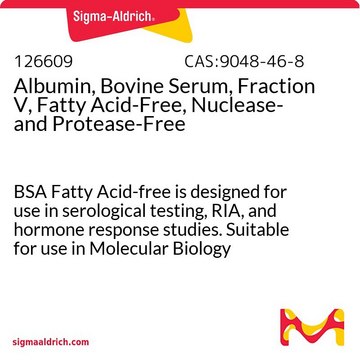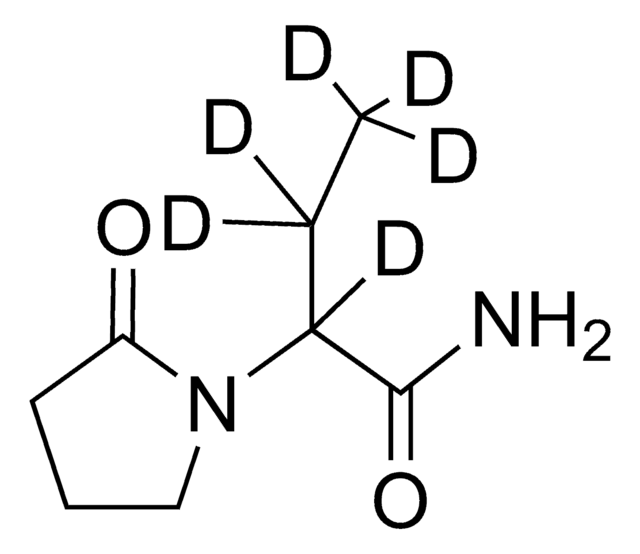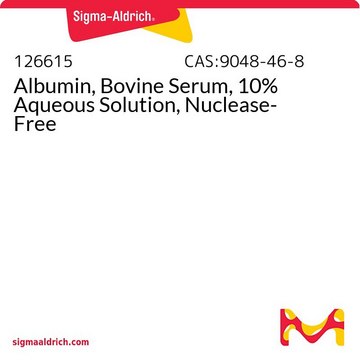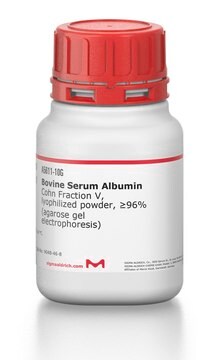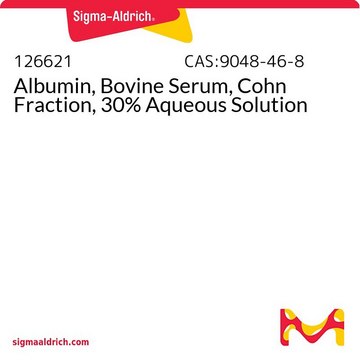126575
Albumin, Bovine Serum, Fraction V, Fatty Acid-Free
Synonym(s):
Albumin, Bovine Serum, Fraction V, Fatty Acid-Free
About This Item
Recommended Products
Assay
≥95% (cellulose acetate electrophoresis)
form
powder
manufacturer/tradename
Calbiochem®
storage condition
OK to freeze
impurities
≤0.02% fatty acids
≤3% ash
≤5% moisture
color
white to light yellow
light yellow to light brown
shipped in
ambient
storage temp.
2-8°C
General description
Application
- as a component of: blocking buffer immunoelectron microscopy (IEM) for various cells
- mitochondrial isolation buffer (MIB) and mitochondria assay solution (MAS) to trap free fatty acids released during adipose tissue homogenization
- blocking buffer for wholemount staining of the esophageal epithelium (EE) in immunofluorescence
Biochem/physiol Actions
Warning
Preparation Note
Reconstitution
Legal Information
Storage Class Code
11 - Combustible Solids
WGK
WGK 3
Flash Point(F)
Not applicable
Flash Point(C)
Not applicable
Certificates of Analysis (COA)
Search for Certificates of Analysis (COA) by entering the products Lot/Batch Number. Lot and Batch Numbers can be found on a product’s label following the words ‘Lot’ or ‘Batch’.
Already Own This Product?
Find documentation for the products that you have recently purchased in the Document Library.
Customers Also Viewed
Articles
16HBE14o- human bronchial epithelial cells used to model respiratory epithelium for the research of cystic fibrosis, viral pulmonary pathology (SARS-CoV), asthma, COPD, effects of smoking and air pollution. See over 5k publications.
Our team of scientists has experience in all areas of research including Life Science, Material Science, Chemical Synthesis, Chromatography, Analytical and many others.
Contact Technical Service


